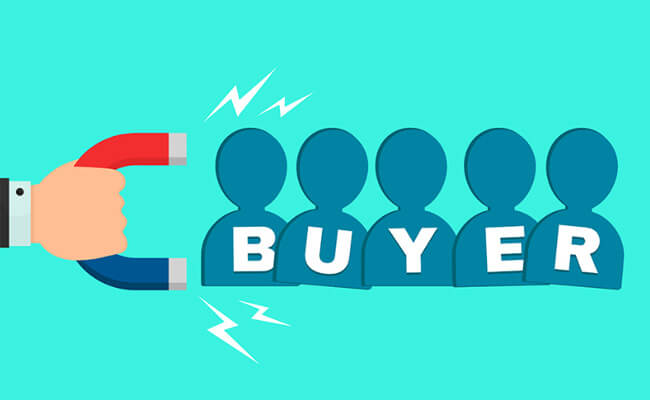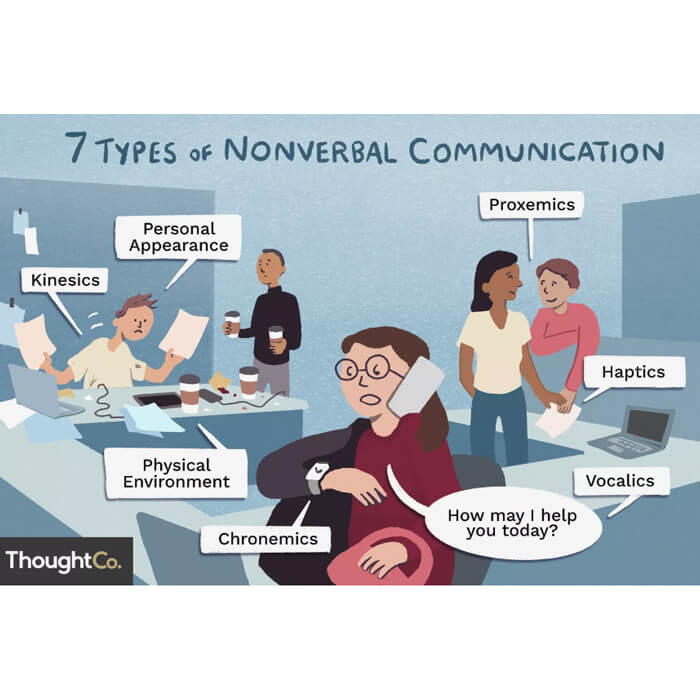Table of content:
 Image Source: morethanaccountants.co.uk
Image Source: morethanaccountants.co.uk
Undoubtedly, customers's attention is a vital part of a successful marketing strategy. However, the proliferation of social channels has changed how people receive brand messages.
Now, there is such an overwhelming amount of marketing messages that they have become distractions. In turn, people no longer pay as much attention, rendering messages useless. However, there are ways marketers can adapt to this change in customer behavior. Read on to find out how!
The Average Person's Attention Span Is 8 Seconds
With the reach of social media and the internet, more brand messages are coming out faster than ever. According to some studies, the average consumer sees up to 10,000 brand messages a day.
However, that does not mean they actually pay attention to those messages. A British study discovered that consumers switch screens up 21 times an hour. Evidently, despite the large number of brand messages, few of them are impactful and memorable.
Students at the IE School of Human Sciences & Technology have seen that the messages only create more “noise”. Jaime Vega, academic director of Market Research and Consumer behavior, affirms this
To Vega, the heavy saturation of brand messages is a distraction from meaningful content. He finds that the distractions are a clear problem for today’s marketers.
He says, “As consumers, our attention is divided across different screens and multi-tasking so the fight for our attention is tougher than ever.”
Entrepreneur says the flood of content we see is forcing people to be selective about what they see. With the number of distractions in the market, how can your brand stand out? How do you get people to engage with your content?
Value the Customer
When it comes to a marketing campaign, the brand’s message is undoubtedly important. However, thinking exclusively about your company’s priorities, you risk ignoring what your customers want.
Remember, as a brand, you are supposed to be answering your customer’s needs and wants.
Some marketers have turned to “clickbaiting”, using headlines to target interests, demographics and other metrics. However, this consistently fails because the messages typically have no value after the title. There is a better way.
We saw that the accumulation of new technology and social media has created more noise with brand messages. However, it does come with its benefits.
“New technologies and social platforms are enabling new ways of testing market researchers,” Mateos said, “And more importantly, they can do this with a limited time frame, so investment and business impact is limited.”
Social media is making it easier for marketers to get direct feedback from consumers. In turn, marketers will create more relevant and valuable campaigns.
Remember that your brand message should always serve the customers first. If you want customer followings, you need to know what they want and answer with relevant content.
Entertain & Engage
One of the competing thoughts about customers's attention spans is that they are actually evolving, rather than shrinking. People are only willing to pay attention to things that matter to them or stimulate activity. So how do you grab ahold of their selective attention?
Jerry Seinfeld, celebrity comedian, once said, “This whole idea of an attention span is, I think, a misnomer. People have an infinite attention span if you are entertaining them.”
Steve Martin agreed with him, “Be so good they can’t ignore you.”
When you think about engaging TV shows or movies, they are usually hinged on provoking an emotional response. Branding messages work the same way.
Mateos stated, “Companies need to generate simpler messages, communicated in a sharper way and of course they need to adapt those messages to each context – making them more visual, emotional and engaging.”
Entertainment and emotional engagement are key to effective marketing. When you entertain someone long enough, they are likely to remember your content. When people feel a strong emotion, social sharing is impulsive.
In turn, your brand message distinguishes itself from its competition.
Entertain & Engage Customers's Attention with Video Content
What better way is there to engage, entertain, and educate than with video? According to Cisco, online videos will be 88% of all consumer internet traffic in 2022. In a society that is extremely fast-paced, videos deliver content in a way quick, mobile-friendly way.
Not only are videos more efficient, but they are more effective. Insivia says that people remember up to 95% of information they saw in a video. People only remember 10% of information from text.
However, that is not to say that you can just produce a video and instantly win more leads. The video industry is just as saturated as brand messaging, if not more. Your videos do not need to be extensively produced, but they do need to be authentic and relevant.
Like we saw above, emotional responses are key to keeping your customers's attention. In the same way, the most compelling videos are the ones that cater to the customer’s feelings.
Personalized videos allow you to connect better with your customers. In videos, you are able to speak directly to your customers.
Videos are not an immediate cure. But given some time and strategy, they can help your brand stand out.
Channel Your Customer's Primal Instincts
In addition to tapping into people's emotions, try to connect with something even deeper and more base. The brain is a complex thing and can be a difficult thing to connect to. However, answering primal instincts can be a powerful way to gain and hold customers’ attention.
The “animal” side of our brain is constantly scanning our environment for danger signs and means of survival. By providing content for those needs, you are driving subconscious needs. As a result, you drive their more conscious decision.
For example, seeing a delicious food ad makes your mouth water. Suddenly, you are hungry and willing to purchase said food.
The same applies to sex. We have all heard the saying, “Sex sells.” Just seeing attractive people induces us to want whatever they are selling.
The other powerful primal instinct is danger. This is not to say you have to physically put your customer’s in danger. However, the shock factor of a potentially dangerous situation is enough to engage their attention.
It is important to note that not all businesses deal with products that would appeal to primal tastes. That being said, always be mindful of your products and strategize accordingly.
Write for Readers Short on Time
Now, text-based content is not completely outdated. However, how you handle text-based content has evolved.
Time found that 55% of people only read blog posts for 15 seconds or less. Now, it is more common to skim articles, even popular ones. It is rare that people will read an article in its entirety.
Only 10-20% of readers make it to the bottom of the page. So how do you get more people to stick to your content? Moreover, how do you write something they will actually remember?
The key thing is to present the most engaging information and images from the very beginning. This will hook them and keep them on the page.
To keep them reading, however, you have to deliver your content in bite-sized pieces. Research shows that three in four words will be skipped over on a page.
To avoid this, make sure you write in a clear, concise and short way. A great way to do this is to use lists, bullet points, charts, and infographics.
It is not necessarily about shorter or longer sentences. It is more about engaging content. It is about delivering important information in an immediate fashion.
Empower Your Email Campaign
Batch emails no longer cut it. Just as all over marketing content has to be specialized in some way, so do your emails.
Again, you only have 8-10 seconds to capture customers’ attention. To get the most out of those seconds, you have to segment your mailing list. This means you split up your mailing list according to certain metrics, like purchasing history or gender.
This way, you can send personalized emails to customers. This increases the likelihood that they will read your content.
Doggyloot tried this out with their customers. They discovered their click-through rate was 410% higher than average. Segmentation allows people to receive relevant content.
Other ways to personalize your emails is to place the subscriber’s name in the subject line. Also, suggest products that are relevant to them. In this way, your subscriber feels valued and important.
Also, be mindful of your email’s structure and form. If you are at all like me, emails have to be dynamic and quick to scan.
Make sure it is some responsive and easy to skim. And, you guessed it, keep it simple and short.
The Power of Contrasts
Another effective way to capture customers's attention is to present them with contrasts. The “Before” and “After” photos of weight loss ads are some of the most common uses of contrasts.
Contrast is a powerful concept because of how it drives human perception. For example, our eyes are naturally drawn to movement. In the same way, our mind naturally wants to pick out things that contrast their environment.
With brand messages, people are presented with choices every single day. Whether it is “good vs. bad” or “safe vs. risky”, your customers want to make good decisions. They want to make decisions that will benefit them in the long run.
If you provide comparisons in your content, you are not just making vague statements about your brand’s success. Comparisons allow customers to see progress and results. In turn, your content seems more authentic.
Moreover, contrasts translate messages your brain faster than if you just described your message alone. Framing content in this way allows people to immediately make positive connections to your brand. Customers do not have to wonder if something is a good deal when a contrast already proves it.
Loading Delays Can Hurt Conversion Rates
Did you know that a page load speed can impact customer engagement? A Google study found that 53% of people will leave a website if it takes longer than 3 seconds to load.
You might have taken months to create your perfect marketing strategy. You might have done everything right. However, none of that matters if your website or content is inaccessible.
And the cost is higher than you think. Forbes discovered that a 100-millisecond load time can decrease conversion rates by 37%. The slower your page loads, the less engaged your customers are. In turn, they may stop visiting your site and buying from you at all.
It plays out across all platforms and browsers. One second too long loading is one less customer.
That being said, take initiative to find out why your page is loading slower. This is where looking at your analytics is super important.
Overloading your page with images is one of the ways to slow it down. Other things to look out for are your Javascript, caches and redirects. These can also be responsible for slowing your site down.
Improve Your Social Responses
While we are on the topic of speed and immediacy, slow customer service responses are also problematic. Social media is valuable for analyzing your customer’s behavior. However, you should also use it to gauge and quickly respond to complaints.
Buffer says 40% of people who express their complaints through social media expect a reply within 60 minutes. However, the average response time for a complaint is 5 hours
Let’s do some math here. Customers’ attention spans are only 8-10 seconds. People are only willing to wait about 3 seconds for a page to load.
In five hours, you have already lost your customer’s interest. They might not even come back to you if they think your customer service is inefficient. That being said, upping your social care online is vital.
This is probably why many businesses and brands have more than one means of communication. They are no longer just relying on phone calls or emails. There are now active chat rooms on many sites.
Business have been using automated customer service replies to combat the slow response time. Analyze your most common problems and set up an automatic answering system. This way questions get answered more effectively.
Try, Try Again
Industries are always evolving. That means campaigns might not always be successful. However, just because you failed your first try, does not mean your message cannot work at all.
According to Cision, people need to see your content seven times before they pay attention. As such, repetition could be key to overcoming shortening attention spans.
Mateos prioritizes “drip marketing”. Essentially, it is a series of pre-written emails sent on a weekly basis.
He said, “Repeated messages and frequently retrieved information will generate a strong footprint which is easier for consumers to access in the future.”
However, this is not encouraging spamming customers with less than average content. Your content has to be valuable, relevant and engaging. Once it is there, you can take repetition to a whole new level.
Try to repurpose your meaningful content into different formats. Start with a text post. Then, maybe create a video or infographic. Keep things interesting and fresh.
Then, redistribute your content on more than one platform. Even if you just favor your social media, share your content with an email campaign. Again, the more visibility the better.
Done correctly, repetition could become the most powerful part of your marketing strategy.
Conclusion
Evidently, customers’ attention has become a resource marketer cannot take for granted. However, it seems that the thought of customers’ attention spans becoming scarcer is not necessarily true.
It is not that there is less attention. The attention is just more selective and focused.
Customer behavior demands more out of marketing strategies than ever. Customers know when content is not relevant to them and therefore, they will not pay attention.
Marketers have to create stimulating content in short, efficient means. They have to listen and watch what customers respond to. The relationship between brands and consumers is a constant cycle of input and feedback.
I hope this article was helpful to you. If you have any questions or comments, please share them below!
Awesome! Share To :
Receive our news



